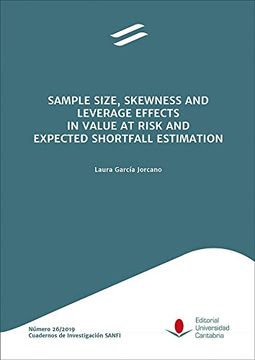Share
Sample Size, Skewness and Leverage Effects in Value at Risk and Expected Shortfall Estimation
Laura García Jorcano
(Author)
·
Editorial Universidad De Cantabria
· Paperback
Sample Size, Skewness and Leverage Effects in Value at Risk and Expected Shortfall Estimation - Laura GarcÍA Jorcano
Choose the list to add your product or create one New List
✓ Product added successfully to the Wishlist.
Go to My Wishlists
Origin: Spain
(Import costs included in the price)
It will be shipped from our warehouse between
Thursday, May 23 and
Monday, June 03.
You will receive it anywhere in United Kingdom between 1 and 3 business days after shipment.
Synopsis "Sample Size, Skewness and Leverage Effects in Value at Risk and Expected Shortfall Estimation"
The thesis analyzes the effect that the sample size, the asymmetry in the distribution of returns and the leverage in their volatility have on the estimation and forecasting of market risk in financial assets. The goal is to compare the performance of a variety of models for the estimation and forecasting of Value at Risk (VaR) and Expected Shortfall (ES) for a set of assets of different nature: market indexes, individual stocks, bonds, exchange rates, and commodities. The three chapters of the thesis address issues of greatest interest for the measurement of risk in financial institutions and, therefore, for the supervision of risks in the financial system. They deal with technical issues related to the implementation of the Basel Committee's guidelines on some aspects of which very little is known in the academic world and in the specialized financial sector. In the first chapter, a numerical correction is proposed on the values usually estimated when there is little statistical information, either because it is a financial asset (bond, investment fund...) recently created or issued, or because the nature or the structure of the asset or portfolio have recently changed. The second chapter analyzes the relevance of different aspects of risk modeling. The third and last chapter provides a characterization of the preferable methodology to comply with Basel requirements related to the backtesting of the Expected Shortfall.
- 0% (0)
- 0% (0)
- 0% (0)
- 0% (0)
- 0% (0)
Answer:
All books in our catalog are Original.
Answer:
The book is written in English.
Answer:
The binding of this edition is Paperback.
✓ Producto agregado correctamente al carro, Ir a Pagar.

